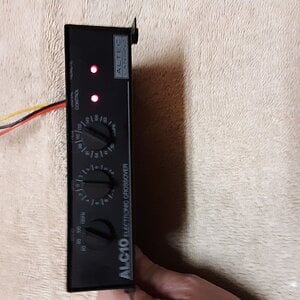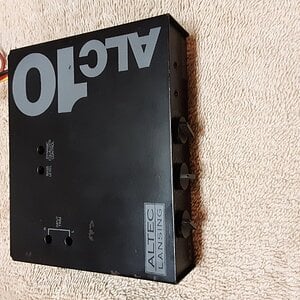Good, least now we can find out how/where they are filtered (crossed). Are you able to get to the same pair of wires that lead from the amplifier? If so, test them again there and we will have a definitive answer. You should be able to just pull the harness and like you did here, plug the speaker wire into the respective resepticals/pin connections and see if they still act the same. If they are pins, be careful no to short them on the other pins around the one you need, you'll need to isolate it. Or, just put a piece of electrician tape around the connection you make or inbetween the pins if applicable. If you can't manage to isolate but know which wires, tap into them (or cut and splice in the tester wire and repair after), once you run the test, we will know the options available to you
I'm not sure what more we are trying to figure out here??
These wires *do* come from the amplifier, if I'm not mistaken, if not where would they be coming from?
For me to access the amplifier I need to pull out power seats, and I don't really want to get into doing that, especially when I don't know what more this is going to tell us.
We have already shown that if I just hook a coaxial speaker up directly with a single pair of wires I'm not going to get the full signal with this test right?
So it seems we were back to what I was stating from the beginning, and what
@Water Bear was also confirming - which is that if I want to use a 2-way coaxial back here I am going to need to clip the tweeter wires on the coaxial and wire each pair separately to the 2 mid and 2 tweeter wires on my harness.
The wires are likely crossed over in my amplifier, which is I think mentioned in at least one of the videos or posts I've previously referenced. As I am not going to replace my amplifier, nor do I want to have to do anything beyond replacing these speakers, I am confused why we need to do anymore tests here.
So I think we are still back to the options I have covered several times:
1) Fix the speakers - in which case problem solved. I've got another refoam kit coming so will see if that works.
2) Purchase just a component mid, wire it to my mid lines and try to reuse my existing tweeters in their current bracket and wiring them to the tweeter wires on the harness. Again, only risk here is that the tweeter bracket doesn't sit properly ontop of a new mid, but since it is basically a 6x9 oval there is a decent chance.
3) Purchase a 2-way coaxial and wire it like mentioned above.
I'm not sure the advantage that #1 has over #2 since both of them require me to do a bit of wire clipping and crimping (and/or maybe a bit of soldering). I think what it comes down to is trying to find a speaker set at close to 2 ohm as possible with a decent price (preferably under $100). The Alpine's used in the blog I can get for like $65-70, but the ohm rating on them is a bit of an unknown (as they seem to be listed as 2/4).
So, unless I am missing something here, what's the purpose of continuing on with the tests, especially if there is a risk of damage?


